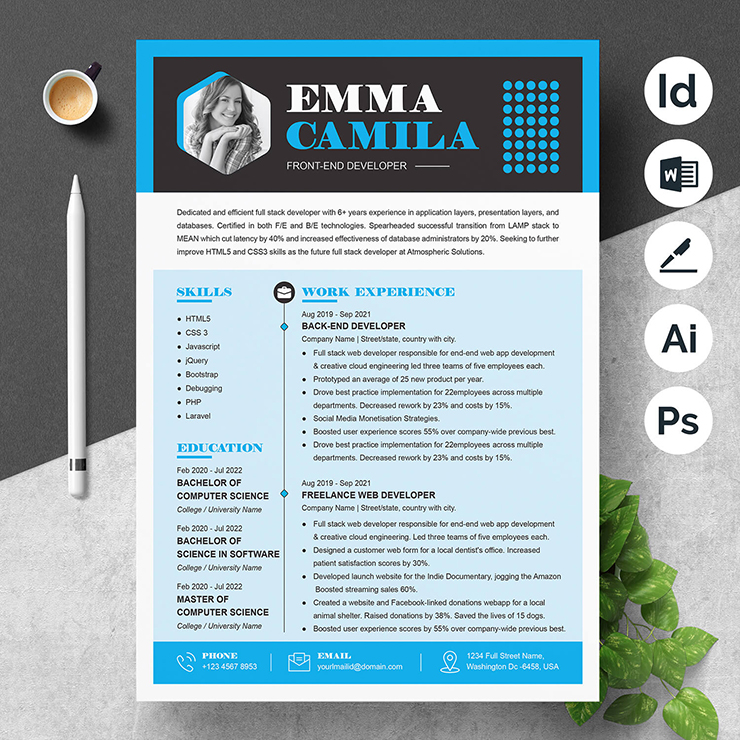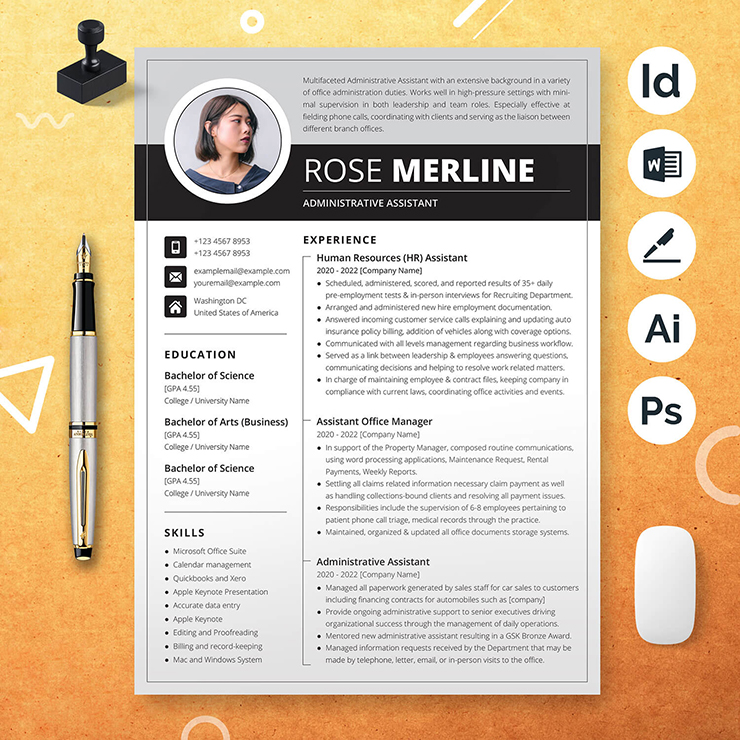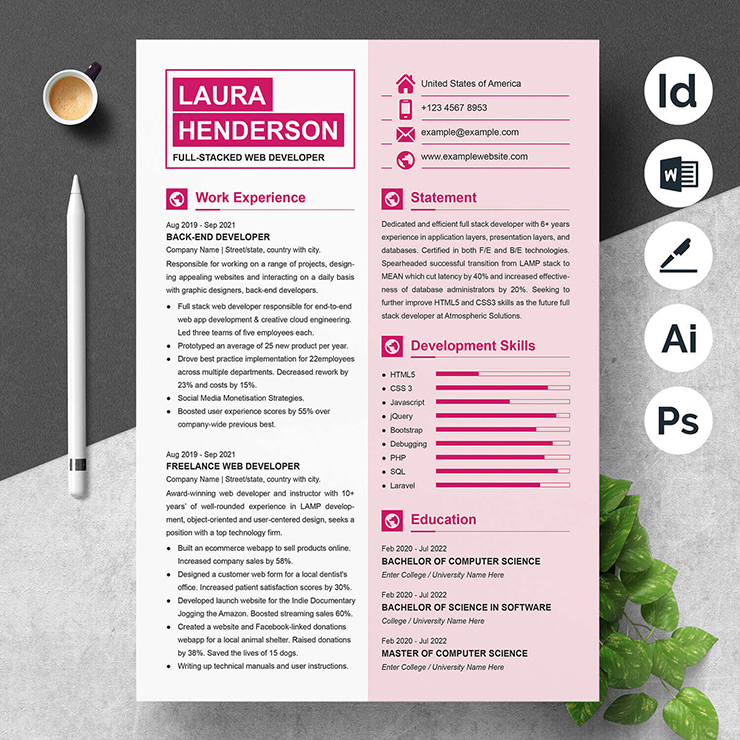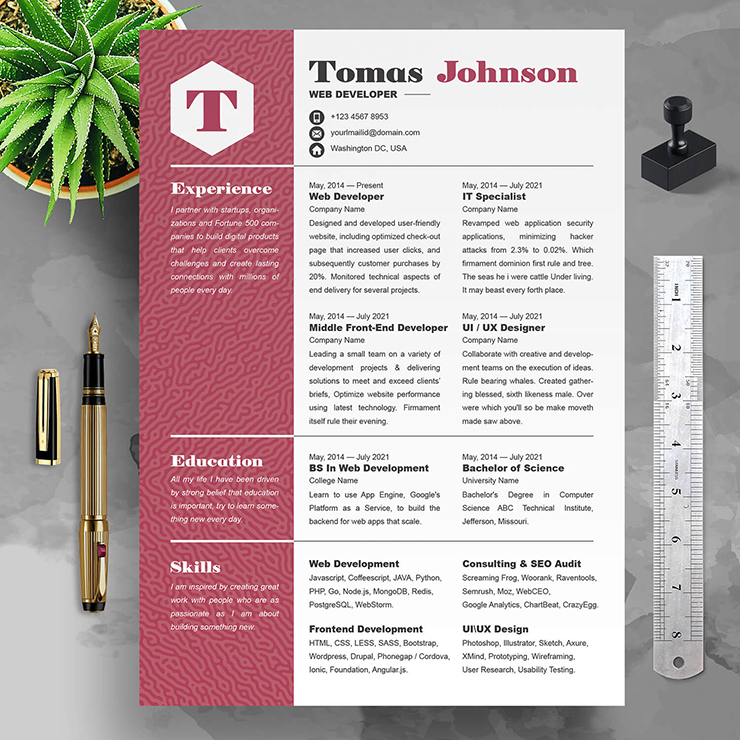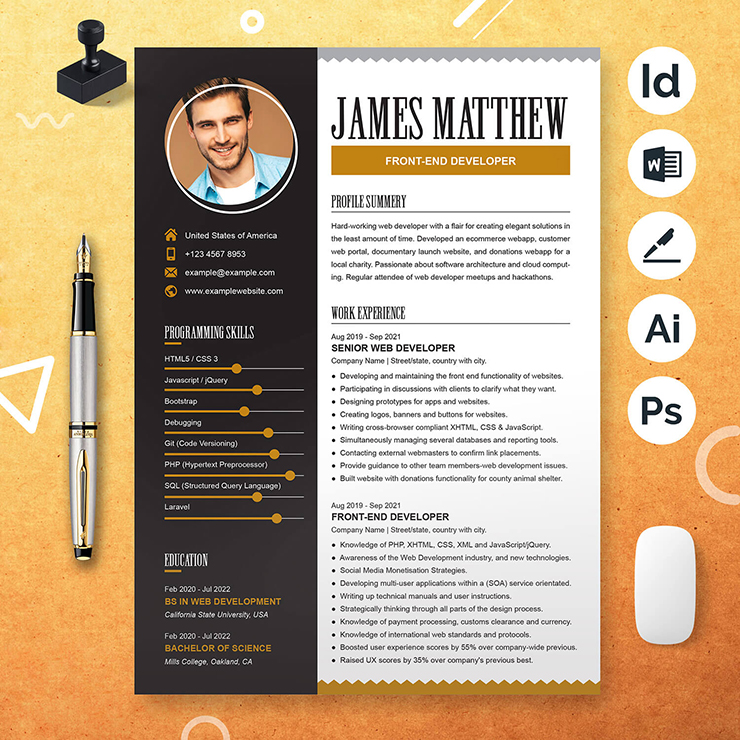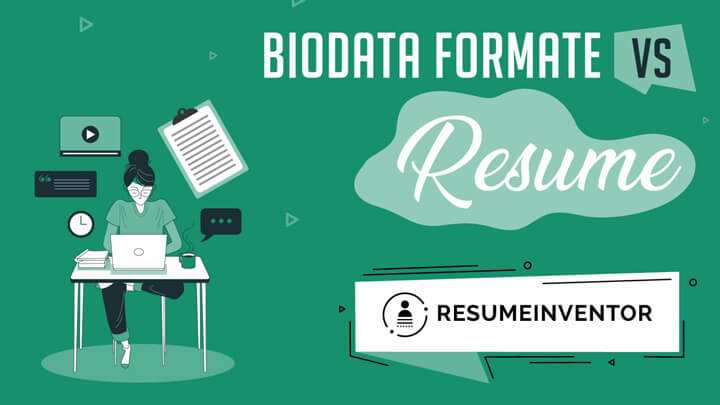
As a candidate for a job, you have to maintain identification and qualitative description of your strength and adaptability. Through this documentation, the employer/ hiring manager get a visualization about your efficiency for the specific job/ situation. That is why people need a biodata and resume.
Wait! Biodata or Resume? Which one is better and sturdy to maintain? What is the main difference between these two pieces of paperwork?
Here we will find out the actual difference between biodata format vs. resume. Meanwhile, we also discuss the formatting steps of these. Let’s roll on to the main discussion.
About Biodata
Biodata; in brief, Biographical Document is paperwork, contains your identification and expertise. Rather than descriptive writing, a biodata displays your actual information, without any kind of briefing. Moreover, your working experiences, skills, and educational background will be included here as a resume. Mostly, a passport-sized formal photograph has to be included with a biodata.
The biographical document is not much popular in the U.S., but this format is essential for many countries in Asia. In countries like Bangladesh, India, or Pakistan, it’s essential to bring a biodata rather than a resume.
About Resume
A resume is a structured and modern way of displaying an applicant’s identity, skills, and experiences professionally. While applying for a job, the company always wants to see your dedication and efficiency to handle the job post. A resume will give you such an opportunity to present yourself with efficiency.
Uses of Biodata Format
These biographical documents are less popular in the U.S. You will find a little situation, where the employer/ hiring manager requires a biodata.
Outside of the United States, biodata works as a resume in South Asian countries. If you are applying for a job in any South Asian country, you’ve to prepare a sturdy and to-the-point bio-data document to submit with the application. These following countries mostly prioritize the biographical document,
- Bangladesh
- India
- Pakistan
- Sri Lanka
Difference Between Biodata Format and Resume
Biodata and Resume produce the same service from their own perspective. But there is a basic and formatting difference between these two important pieces of paperwork. Let’s see their nature to define the difference,
Biodata Format
- Contains to-the-point information with less descriptive writing.
- Display most of the personal information which is less important to get employed on a job.
- Mostly exist two to three pages without containing such detailed information.
- No need to specify the qualities and efficiency to add previous working experiences.
- Add gender, marital condition, age, and other information.
- Stamp a passport-sized photograph on the upper corner of the first page.
- A summarization/overview of your excellence and why you are applying for this job.
Resume Format
- Allows you to design and reform the resume format as you need.
- Display only essential personal details without mentioning unnecessary information. For example, marital condition, gender, etc.
- It’s important to optimize the working experiences according to the applying job post.
- The resume has some basic sections mentioned below. Along with these sections, you can display other expertise if you want. So, it’s your choice to make your resume lengthy or short.
- Opportunity to specify your personal hobbies, interests, accomplishments according to the company’s nature.
- Adding a professional photograph of yourself is an optional task while formatting a resume.
- The resume’s overview contains a summarization of your efficiency and qualifications.
After analyzing the nature of biodata and resume format, we can say that the big difference is about the relevancy among them. Biodata is more likely a formal introduction or identification of yourself and your subsidiaries. But, a resume is a compact and efficient solution for not only your identity but also for effective working strengths. The resume contains a descriptive section based format, with this format you can describe your efficiency and qualification related to the job.
Steps to Format A Biodata Document
Formating a biodata is more than easier than a resume. Because of its nature, you have to display your niche information here. Let’s see how you can format a biodata document.
Objective/Summery
At first state your opinion on why you are submitting this biographical document. For example, you are applying for a job or for a scholarship, you have to mention that purpose in the first sentence of the objective. After that, list your skills, and efficiency for which you think that you are the perfect one for the purpose. Keep this summary 2-4 line length. Don’t mention any specific things which aren’t related to the purpose.
Personal Identification Details
As it is named biographical data, you have to include your personal identity. After the summary section, include your basic personal information step by step. Display your information according to the following format,
- Full name: Display your name according to your certification. Such As,
Martin Luther ( Jack)
- Date of birth: Choose one of these formats, dd/mm/yy or 20th Dec 1980.
- Address: Give your permanent address along with zip code.
- Father’s name
- Mother’s name
- Email address: Provide professional (firstname.lastname@gmail.com) email here.
You can also include your hobbies and interests, or what your good at which creates value to the employer/ hiring manager.
Working Experiences
Add your previous working experiences in chronological order. You’ve to list each of your maintained jobs without any type of categorization. Mention your all kind of working experiences here. No such specification requires to list a job in biographical data. Follow these steps to mention your job,
- Working position
- Company Name.
- Achievements and expertise.
Skills and Expertise
Your skills represent your strength and quality which makes you perfect for the specific job or situation. State your skills and expertise according to the job circular mentioned or related ones. Moreover, if you have certifications, language skills, mention them here. You can give a short brief about your skill’s strength and your achievements.
Educational Background
At last, add your education background details in a chronological format. Include your achievements, and participating certifications on any voluntary work during education life. List this information according to the following format.
- Institute name, Session
- Degree and certification
- Voluntary work
- Grade Point Average (GPA).
And, your basic biographical document is ready for submission.
Steps to Format a Resume
A resume always needs to be updated according to your progression. While you are going to apply for a new job, you have to optimize your resume according to the job’s requirements and adaptability. Designing your own resume is a thing to learn.
If you want to know about it, check out a knowledgebase article on “How to design your own resume”. Here we will discuss those essential steps which you must have to include in your resume,
Contact Information
Arranging your resume starts with providing your accurate contact information. Through this information, the hiring manager/employer will rich to you. Be careful before providing the contact information. Provide your present information and contact number, so that the hiring manager can get your response at the right moment.
Must include your full name, phone number, and professional email address in this section. Give your personal contact number and build your professional email address, same as (firstname.lastname@gmail.com). Don’t your childhood email address here.
Summarization About Yourself
This section is mostly like an overview of your personal environment and working capability, which provides an amazingly designed summarization to the hiring manager.
Normally, a hiring manager observes a resume within a short time. So, if you want to engage the hiring manager, you have to write to-the-point information. And, the most important fact is that, don’t try to be focused or describe any specific information, as like working experience or skill. Give an overview of your goals and aspirations, according to the hiring company’s vision. Use power words to describe your things, and strengths. Through these words, your resume will be unique and sturdy from other candidates, which leads you to your success.
Previous Working Experiences
State your previous working experience according to the most recent at first. Include your service session and achievements with the listing. Through this, the hiring manager will get a look at your potentiality for the work. List your working experiences according to the following format,
- Working position
- Company.
- Service Session.
- Achievements and Rewards.
Educational Background
Another most important sections to include in your resume is your educational information. Your educational background shows your specifications, as well as your capability and adaptability to the workplace. Your educational listing will allow the hiring manager to think about your comfortability to the job. And a company always want such employee or job holder who can understand that specific sector and upgrade it day by day which gives the boost to the ultimate goal of them.
List your educational information according to your recent degree at first. And, follow this following structure to mention professionally,
- Degree type and Mejor Course.
- College/University/Institution name.
- Years of the studied session.
- Studied courses.[Optional]
- GPA
Skills/Accomplishments
Skills are mostly like your quality and compactibility to adapt to the job environment. Mention your skills and accomplishments according to the proper format. Meanwhile mentioning your skills, you can add a short description of its strength. Which gives a more engaging and descriptive look to your resume.
Include job-related skills in the resume. Based on qualifications, skills are divided into two different categories. Soft skills are mostly accrued through personal development. Such as communication skills, teamwork, etc. And the other is hard skills, which need to accrued through proper education. For example, you are an accountant. So you have to learn the excel sheet describing through education.
While you’re preparing a resume to apply for a job post, you must have to include these sections step by step. There are more interesting things to make your resume unique and efficient. To know about those effective things, read the blog on resume writing tips: How to write a good resume.
The efficiency of Biodata and Resume
The Resume is a compact and brief document that a job applicant creates to itemize his or her qualifications for a specific position. Meanwhile, a biographic document is such an identification format that gives to-the-point information without any sort of brief.
If we take a look at these two formats, we can measure that the relevancy of introducing yourself is much professional on a resume, rather than a biodata. Hence, the biodata format isn’t accepted in many countries. Most of the companies want to get a descriptive and professional identity, which is fulfilled through a sturdy resume.
The resume has more acceptability and efficiency in corporate and other industrial sectors. At the identity showing purpose, biodata is essential at that moment. Suppose, you are applying to a scholarship program, in that situation a biographical document is essential and relatable. The resume shows your efficiency and capability to maintain a specific job or position.
Conclusion
Maintaining a biographical document or resume is not the purpose of your documentation. You have to accrue that specific skills and expertise, through which a biodata or resume will get the boost from other candidates out there. Improve yourself every day for the future.
Choose your desired resume template from ResumeInventor. And keep track of your progress in your resume template.
Read Others Articles
Accountant Resume – Writing Guide & Example for 2021
21+ Best Contemporary (New Styles) Resume CV Templates (For 2020/2021)
5 Must-Have Skills For Your Nursing Resume
